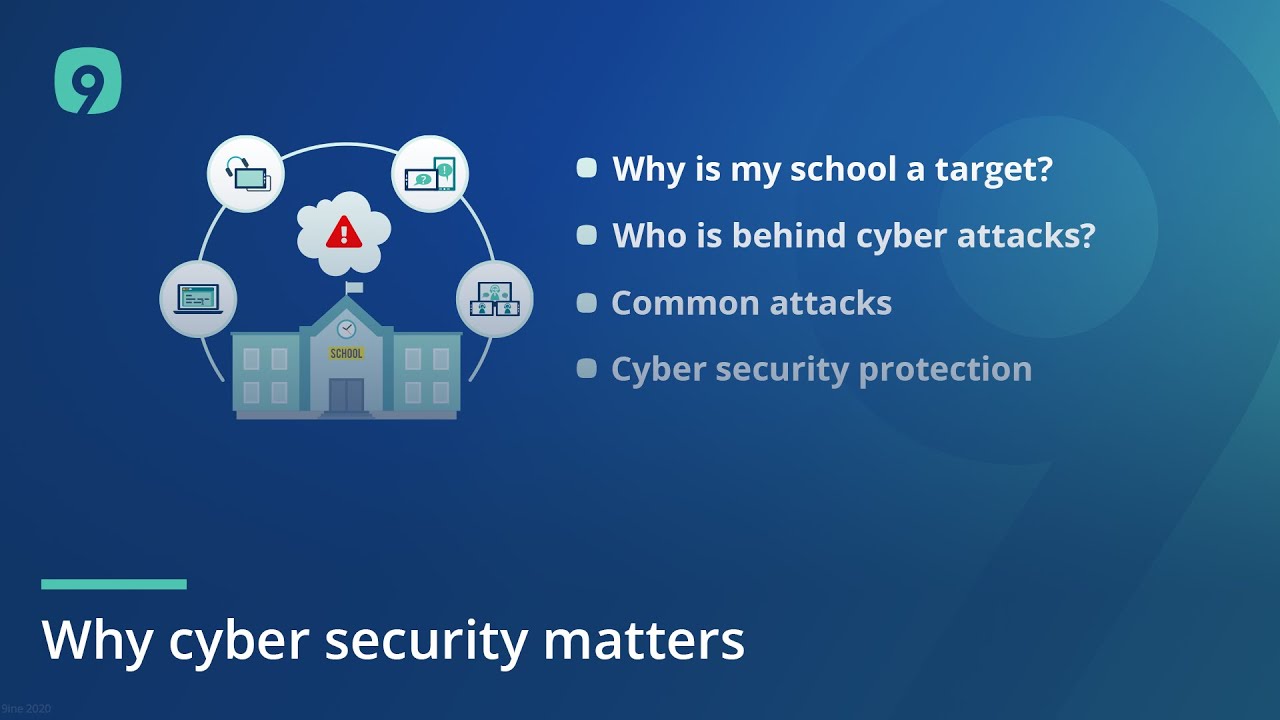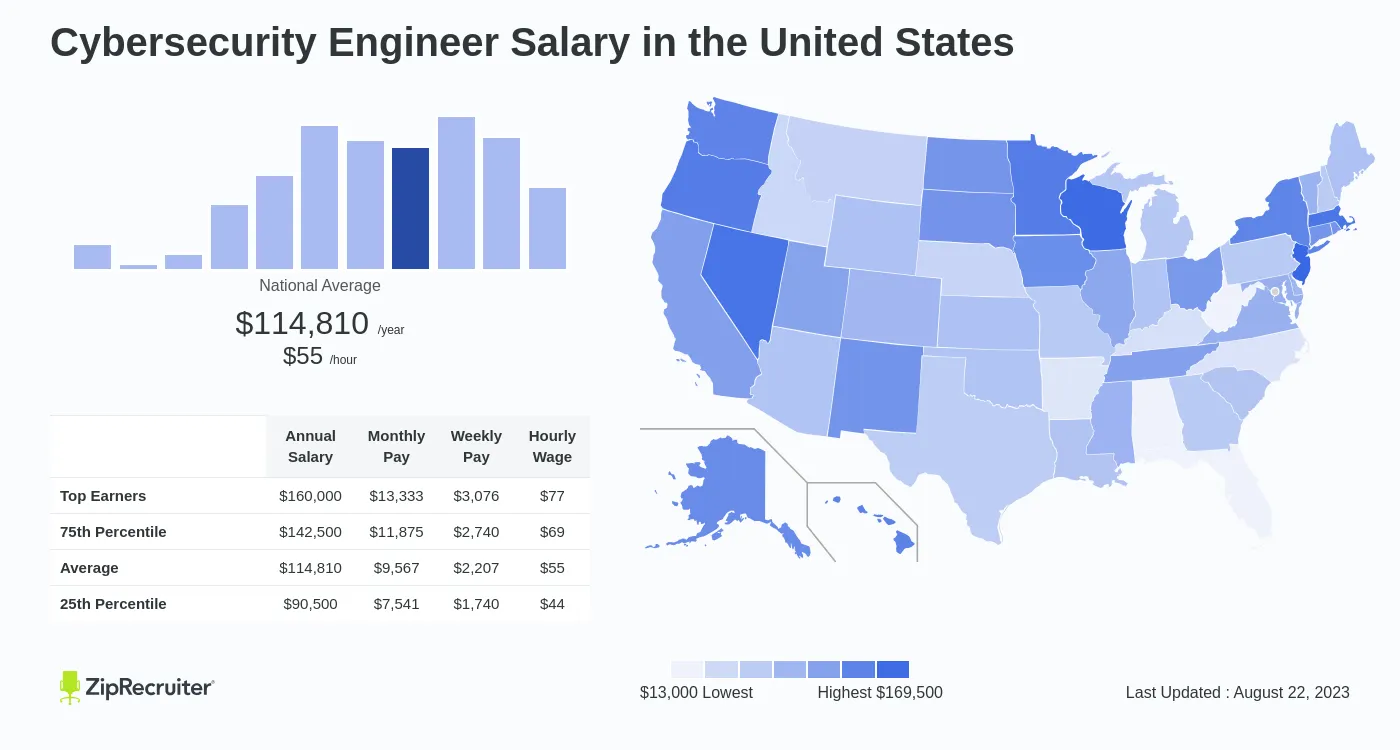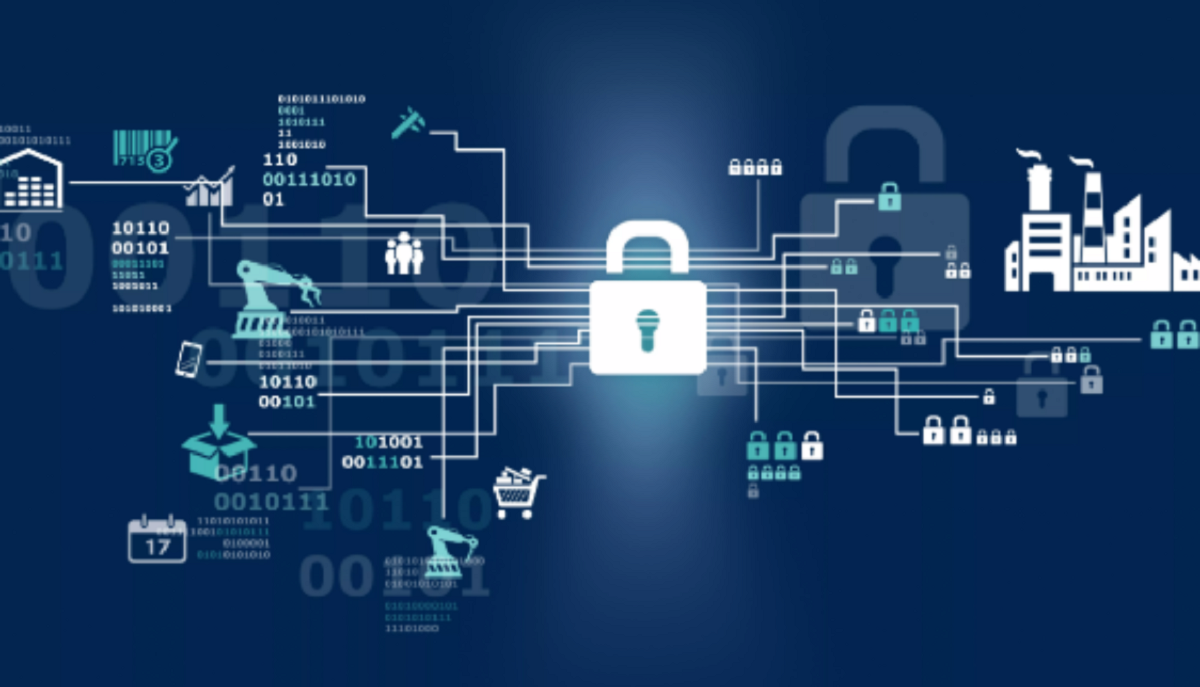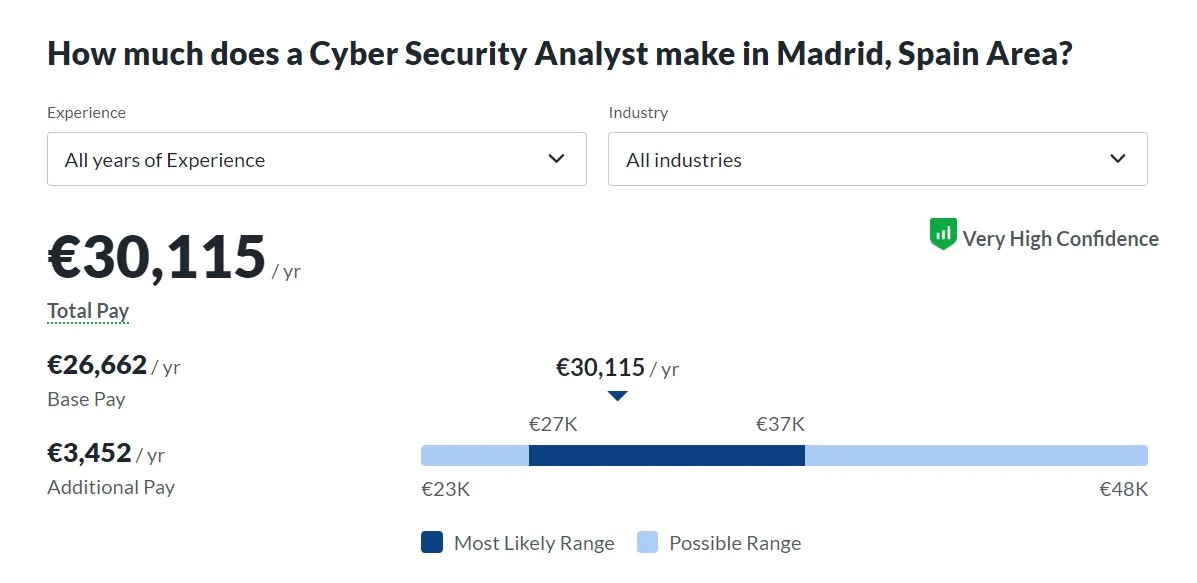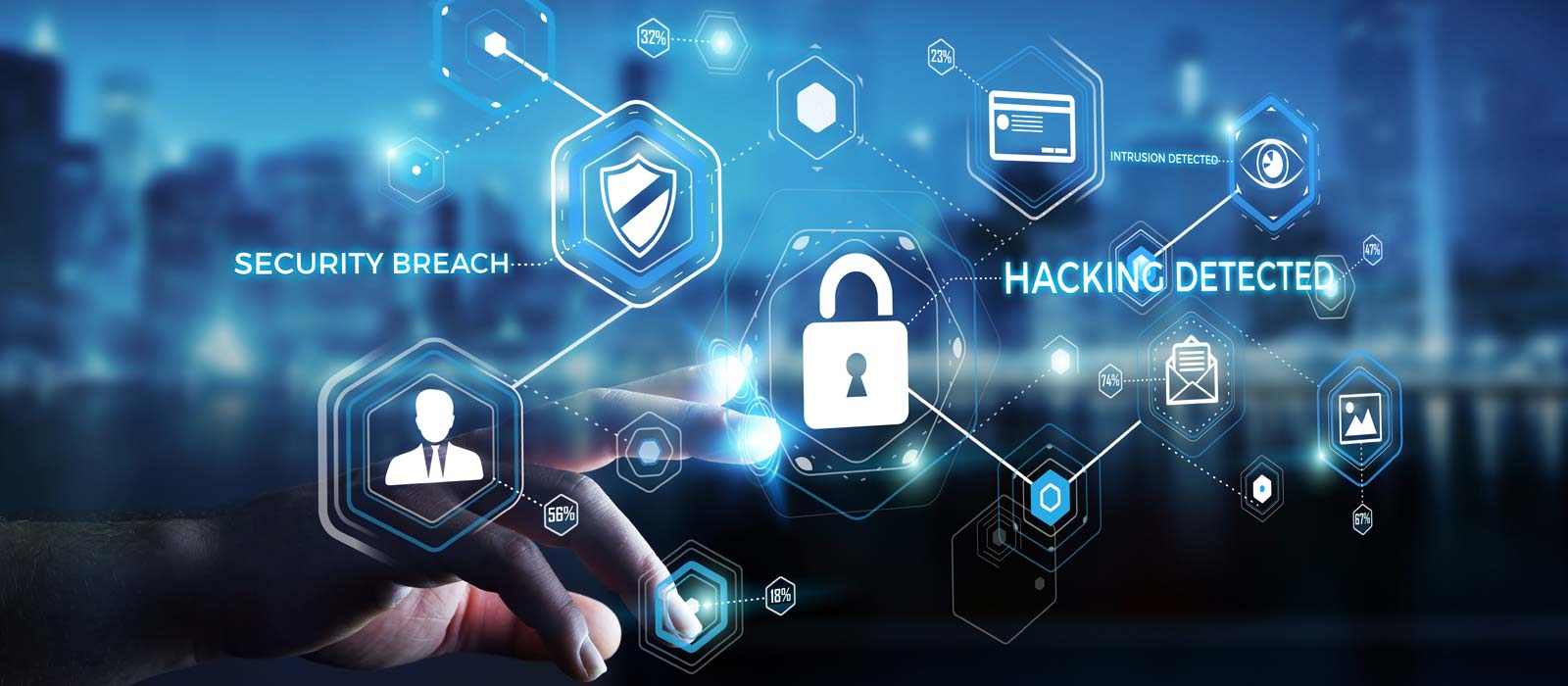Introduction
As technology continues to advance, the healthcare industry is becoming increasingly reliant on digital systems to streamline operations and improve patient care. While these technological advancements bring numerous benefits, they also come with significant cybersecurity risks. Cybersecurity refers to the protection of computer systems, networks, and data from unauthorized access, theft, or damage. In the context of healthcare, it is of utmost importance due to the sensitive nature of the information involved, such as patient medical records and personal data.
The consequences of breaches in cybersecurity can be catastrophic, not only for the healthcare organizations themselves but also for patients. Confidential patient information may be compromised, leading to identity theft, fraud, or other malicious activities. Furthermore, breaches can result in substantial financial losses, legal and regulatory penalties, and even compromise patient safety.
The healthcare sector, with its vast amounts of sensitive data and interconnected systems, has become an attractive target for cybercriminals. They exploit vulnerabilities in networks, software, and human behavior to gain unauthorized access and exploit data for financial gain. With the increasing digitization of medical records and the adoption of telemedicine, the attack surface for cyber threats in healthcare has expanded exponentially.
This article explores the importance of cybersecurity in healthcare and the various threats and risks that healthcare organizations face. It will delve into the potential consequences of cybersecurity breaches, including patient data breaches, financial implications, legal and regulatory consequences, and patient safety risks. Additionally, it will highlight the growing reliance on technology and interconnectedness in healthcare and the vulnerabilities that arise from this dependency. Finally, it will provide insights into the best practices and solutions for implementing robust cybersecurity measures in the healthcare industry to mitigate these risks.
Cybersecurity Threats in Healthcare
The healthcare industry faces a myriad of cybersecurity threats that pose significant risks to patient safety, data privacy, and organizational integrity. These threats include but are not limited to the following:
- Malware and Ransomware: Malicious software, such as viruses, worms, and ransomware, can infiltrate healthcare networks and compromise sensitive data. Ransomware attacks, in particular, have been on the rise, where hackers encrypt data and demand a ransom for its release, causing significant disruptions to patient care.
- Phishing and Social Engineering: Cybercriminals often employ phishing tactics, such as fraudulent emails or websites, to trick healthcare employees into revealing passwords or downloading malicious attachments. Social engineering techniques, like impersonating coworkers or IT staff, are also used to gain unauthorized access to systems.
- Insider Threats: Internal employees or contractors who have access to sensitive data can pose a significant risk. Whether intentional or unintentional, these individuals may misuse or disclose data, compromising patient privacy.
- Medical Device Vulnerabilities: With the increasing use of interconnected medical devices, cybersecurity vulnerabilities have emerged. Hackers can exploit these devices to gain control or manipulate critical patient data, leading to potential harm.
- Third-Party Risks: Healthcare organizations often collaborate with third-party vendors for various services. However, these partnerships can introduce additional cybersecurity risks if proper security measures are not implemented by these vendors.
The consequences of these cybersecurity threats can be severe. Patient data breaches not only lead to legal and financial implications for organizations but also result in a loss of patient trust and ultimately jeopardize patient safety. Privacy breaches can expose sensitive medical information, leading to identity theft, fraud, and other harmful consequences for individuals.
To mitigate these threats, healthcare organizations must proactively implement robust cybersecurity measures, including regular staff training on cyber awareness, strong access controls and authentication mechanisms, routine system and software updates, and continuous monitoring of networks for irregularities or intrusions. By prioritizing cybersecurity, healthcare organizations can safeguard patient data, protect privacy, and ensure the delivery of safe and reliable healthcare services.
Patient Data Breaches
Patient data breaches are one of the most concerning cybersecurity threats faced by the healthcare industry. These breaches occur when unauthorized individuals gain access to sensitive patient information, such as medical records, personal details, and financial data. The consequences of these breaches can be far-reaching and devastating for both the affected individuals and healthcare organizations.
When patient data is breached, it can lead to various negative outcomes. Firstly, there is a risk of identity theft and fraud, as the compromised information can be used to commit financial crimes or obtain medical services fraudulently. This not only harms patients financially but also their overall well-being and peace of mind.
Additionally, patient data breaches can have a profound impact on individuals’ privacy and personal lives. Medical records contain highly sensitive information, including past medical conditions, medications, test results, and mental health records. The unauthorized exposure of such intimate and confidential details can cause significant distress and damage to a person’s reputation and relationships.
From a healthcare organization’s perspective, patient data breaches can result in severe legal and financial consequences. Many countries have privacy laws in place, such as the Health Insurance Portability and Accountability Act (HIPAA) in the United States, that require organizations to protect patient information and report breaches. Failure to comply with these regulations can lead to hefty penalties and reputational damage.
Moreover, there is a loss of patient trust and confidence in the healthcare industry when data breaches occur. Patients expect healthcare organizations to maintain the confidentiality and security of their information. When this trust is compromised, patients may hesitate to share crucial medical information, leading to potential harm in the diagnosis and treatment processes. This breakdown in trust can have long-lasting consequences for both patients and healthcare providers.
To prevent and mitigate patient data breaches, healthcare organizations must implement comprehensive security measures. This includes conducting regular risk assessments, encrypting patient data, implementing access controls and authentication protocols, monitoring network activity for suspicious behavior, and providing continuous training to staff on data privacy and cybersecurity best practices.
In summary, patient data breaches can have severe consequences for individuals, healthcare organizations, and the overall trust and integrity of the healthcare industry. By prioritizing robust cybersecurity measures and maintaining a proactive approach, healthcare organizations can protect patient data, preserve privacy, and uphold the highest standards of patient care.
Financial Implications
Cybersecurity breaches in the healthcare industry can have significant financial implications for organizations. The costs associated with data breaches can be substantial and encompass various aspects of an organization’s operations and reputation.
One major financial impact of a cybersecurity breach is the cost of incident response and investigation. When a breach occurs, organizations must quickly mobilize their cybersecurity teams to assess the extent of the breach, mitigate further damage, and investigate the cause. These immediate response efforts require specialized expertise and can be quite expensive, especially if external cybersecurity firms are involved.
Additionally, healthcare organizations must address the costs of data recovery and system restoration. In some cases, data may need to be restored from backups or reconstructed, which can be a time-consuming and costly process. The disruption to normal operations can also result in lost productivity and revenue, further exacerbating the financial impact of a breach.
Furthermore, healthcare organizations may face legal and regulatory penalties following a cybersecurity breach. Many jurisdictions have enacted strict data protection and privacy laws that mandate organizations to safeguard patient information. Non-compliance with these regulations can lead to significant fines and legal settlements. For example, HIPAA violations in the United States can result in fines ranging from $100 to $50,000 per record breached, depending on the severity of the violation.
The reputational damage resulting from a cybersecurity breach can have long-lasting financial implications. Healthcare organizations rely on the trust and confidence of patients to drive their business. When a breach occurs, patients may question the organization’s ability to protect their data and seek healthcare services elsewhere. As a result, healthcare organizations may experience a decline in patient volume and revenue.
Moreover, healthcare organizations may incur costs related to identity theft protection services for affected individuals. Offering credit monitoring and identity theft protection to patients whose information has been compromised is a responsibility that healthcare organizations must bear. These services can be costly, especially if a large number of patients are affected by the breach.
In summary, the financial implications of cybersecurity breaches in healthcare are significant and multifaceted. The costs associated with incident response, data recovery, legal penalties, and reputation management can create a considerable financial burden for organizations. By investing in robust cybersecurity measures, healthcare organizations can mitigate these financial risks and protect their financial stability.
Legal and Regulatory Consequences
In the healthcare industry, cybersecurity breaches can have severe legal and regulatory consequences for organizations. Governments and regulatory bodies have implemented strict data protection and privacy laws to ensure the confidentiality and security of patient information. When breaches occur, healthcare organizations can face a range of legal and regulatory actions.
One of the primary legal consequences of a cybersecurity breach is the potential for lawsuits from affected individuals. Patients whose data has been compromised may file lawsuits against healthcare organizations, seeking damages for the harm caused. These lawsuits can result in significant financial settlements, legal fees, and damage to the organization’s reputation.
Regulatory bodies enforce data protection laws and have the authority to investigate breaches and impose penalties. For instance, in the United States, the Office for Civil Rights (OCR) is responsible for enforcing the Health Insurance Portability and Accountability Act (HIPAA). The OCR can conduct audits, investigations, and impose fines for non-compliance. The fines for HIPAA violations can range from tens of thousands to millions of dollars, depending on the severity of the breach and the organization’s ability to demonstrate compliance efforts.
In addition to financial penalties, healthcare organizations may be required to implement corrective action plans to address security weaknesses identified in the aftermath of a breach. These plans can involve significant investments in upgrading cybersecurity systems, implementing additional safeguards, and providing ongoing staff training. Failure to adhere to these corrective actions can lead to further legal consequences and potential loss of operating licenses or certifications.
The impact of a cybersecurity breach on reputation and public trust can also have legal ramifications. Healthcare organizations heavily rely on their reputation to attract patients and build relationships with other healthcare providers. A breach can tarnish an organization’s professional standing and hinder future collaborations and partnerships. Legal and regulatory actions may be intensified if the breach attracts media attention and public scrutiny, further damaging the organization’s reputation.
Furthermore, international data protection regulations, such as the General Data Protection Regulation (GDPR) in the European Union, can have extraterritorial reach. Organizations that handle data of individuals residing in these jurisdictions must comply with the respective regulations. Non-compliance with such regulations can result in penalties, regardless of the organization’s location.
To mitigate legal and regulatory consequences, healthcare organizations should prioritize compliance with data protection and privacy laws. This includes implementing robust cybersecurity measures, regularly auditing and assessing security protocols, conducting staff training on legal and regulatory requirements, and maintaining a culture of transparency and accountability.
In summary, healthcare organizations face significant legal and regulatory consequences in the event of a cybersecurity breach. The potential for lawsuits, regulatory penalties, corrective action plans, and reputational damage highlight the importance of adhering to data protection and privacy laws. By prioritizing compliance and investing in effective cybersecurity strategies, organizations can minimize legal risks and protect their reputation in the industry.
Patient Safety Risks
Cybersecurity breaches in the healthcare industry not only jeopardize the privacy and security of patient data but also pose significant risks to patient safety. These risks can have dire consequences, putting patients’ health and well-being at stake.
One key patient safety risk associated with cybersecurity breaches is the potential for alteration or manipulation of medical records. If hackers gain unauthorized access to electronic health records (EHRs), they can modify critical information such as medication orders, lab results, or treatment plans. Such tampering can lead to medical errors or misdiagnoses, compromising patient safety and potentially causing harm or even fatalities.
Moreover, cybercriminals may target and exploit vulnerabilities in medical devices. With the increasing reliance on connected devices and Internet of Things (IoT) technology in healthcare, hackers can gain control of medical devices like pacemakers, insulin pumps, or patient monitoring systems. Manipulation of these devices can result in improper dosing, interference with critical functions, or unauthorized access to sensitive patient data, placing patients’ health and lives at risk.
Another patient safety concern arises from disruptions to healthcare services caused by cybersecurity breaches. When healthcare organizations experience a breach, systems and networks may become temporarily or indefinitely unavailable. This can lead to delays or interruptions in patient care, including appointment cancellations, medication dispensing errors, or delays in vital treatments. The inability to access critical patient data in emergencies or during surgeries due to system downtime can significantly compromise patient safety.
Furthermore, breaches involving personal health information can result in psychological distress for patients. The unauthorized disclosure of sensitive medical information can lead to anxiety, stress, and loss of trust in the healthcare system. Patients may hesitate to share important health information, which in turn affects the accuracy of diagnoses and treatment plans, ultimately compromising patient outcomes and safety.
To mitigate patient safety risks associated with cybersecurity breaches, healthcare organizations must prioritize the implementation of robust security measures. This includes conducting regular risk assessments to identify potential vulnerabilities, adopting cybersecurity best practices for medical devices, educating staff on cybersecurity protocols, and establishing incident response plans to minimize the impact of breaches on patient care.
Additionally, collaboration between healthcare organizations and cybersecurity experts is crucial to stay updated on emerging threats and implement effective countermeasures. Encouraging a culture of reporting and addressing potential security incidents can also help identify and address vulnerabilities before they pose a risk to patient safety.
In summary, patient safety is profoundly impacted by cybersecurity breaches in the healthcare industry. The risks of altered medical records, manipulation of medical devices, disruptions in healthcare services, and psychological distress highlight the necessity for robust cybersecurity measures. By adopting a proactive approach to safeguarding patient data and ensuring the integrity of healthcare systems, healthcare organizations can protect patient safety and provide the best possible care.
Importance of Protecting Medical Devices
In today’s digitally-driven healthcare landscape, medical devices play a crucial role in diagnosing, monitoring, and treating patients. From pacemakers and insulin pumps to MRI machines and infusion pumps, these devices have revolutionized healthcare delivery. However, with the rise of connectivity and the Internet of Things (IoT), it has become essential to prioritize the protection of medical devices from cybersecurity threats.
Medical devices, like any other computer system, are vulnerable to cyber threats. If these devices are compromised, the consequences can be life-threatening. Hackers can exploit weaknesses in the software or network connections of medical devices, potentially gaining control over their functionality. This could lead to unauthorized manipulation, alteration, or interruption of vital medical processes, putting patients’ health and safety at risk.
One of the primary concerns is the potential for unauthorized access to patient data through compromised medical devices. Many devices store patient-specific information, such as medication dosages, treatment plans, and medical history, which could be valuable to cybercriminals. Unauthorized access to such data can lead to privacy breaches, identity theft, or even extortion attempts, compromising both patient safety and confidentiality.
Another critical aspect of protecting medical devices is ensuring the integrity of their performance and accuracy. Any intentional or unintentional manipulation of device functionality can lead to incorrect diagnoses, improper treatment administration, or incorrect dosage delivery. For example, tampering with infusion pumps could result in medication errors, leading to severe patient harm or even fatalities. By implementing robust security measures, healthcare organizations can ensure the accuracy and reliability of these life-saving devices, ultimately safeguarding patient well-being.
The interconnectedness of medical devices within healthcare networks also poses a significant challenge. If one device is compromised, it has the potential to spread malware or enable unauthorized access to other connected devices or systems within the network. This can create a ripple effect, impacting the integrity and security of the entire healthcare infrastructure. Therefore, protecting medical devices is critical not only for individual device security but also to prevent cascading cybersecurity incidents that could disrupt patient care on a larger scale.
To address these challenges, healthcare organizations must implement comprehensive security measures for medical devices. This includes integrating security features into the design and development process of devices, such as encryption, authentication mechanisms, and software updates. Regular vulnerability assessments and penetration testing should also be conducted to identify and remediate potential security weaknesses promptly. Additionally, ongoing staff training and education on cybersecurity best practices are crucial to ensure that healthcare providers understand the risks associated with medical devices and can take appropriate measures to mitigate them.
In summary, protecting medical devices is of paramount importance in today’s technology-driven healthcare landscape. By safeguarding the integrity, confidentiality, and functionality of these devices, healthcare organizations can ensure the delivery of safe and effective patient care. The implementation of robust security measures, along with ongoing vigilance and collaboration between healthcare providers and cybersecurity experts, is essential in mitigating the risks posed by cyber threats to medical devices.
Growing Reliance on Technology and Interconnectedness
The healthcare industry has witnessed a significant transformation with the growing reliance on technology and interconnectedness. The adoption of digital systems, electronic health records (EHRs), telemedicine, and interconnected medical devices has revolutionized the way healthcare is delivered. While these advancements offer numerous benefits, they also bring about inherent cybersecurity risks that must be recognized and addressed.
One of the driving factors behind the growing reliance on technology is the need for efficient and streamlined healthcare processes. Digital systems and EHRs enhance the accessibility and availability of patient information, improving care coordination and decision-making among healthcare providers. This accessibility, however, introduces potential vulnerabilities, making it crucial for healthcare organizations to implement robust cybersecurity measures to protect patient data.
The advent of telemedicine has also played a significant role in reshaping healthcare delivery. This technology allows patients to access healthcare remotely, eliminating the need for in-person visits. While telemedicine offers increased convenience and access to care, it also requires the transmission and storage of sensitive patient data across networks. This introduces new cybersecurity challenges, such as securing telehealth platforms, protecting data during transmission, and ensuring compliance with privacy regulations.
Furthermore, the increasing interconnectedness of medical devices has transformed patient monitoring and treatment methods. Networked medical devices, such as connected infusion pumps, ventilators, and cardiac monitors, enable real-time monitoring and data analysis, leading to more precise and timely interventions. However, the integration of these devices into healthcare networks creates additional entry points for cyber threats. Healthcare organizations must implement robust security measures to protect these interconnected devices from unauthorized access or manipulation.
The proliferation of mobile devices in healthcare also contributes to the growing reliance on technology. Healthcare professionals often use smartphones and tablets to access patient information, communicate with colleagues, and make clinical decisions. Mobile devices, however, present unique security challenges due to the potential loss or theft of these devices, as well as the increased risk of malware infections. Protecting mobile devices through encryption, strong access controls, and regular security updates is vital to ensure data confidentiality and prevent unauthorized access.
To address the risks associated with this growing reliance on technology and interconnectedness, healthcare organizations must adopt a comprehensive cybersecurity strategy. This includes implementing strong network security measures, such as firewalls and intrusion detection systems, ensuring regular software updates and patch management, and conducting regular vulnerability assessments. Additionally, healthcare providers should prioritize staff training and awareness programs to educate employees about the importance of cybersecurity and best practices for protecting patient data.
Collaboration between healthcare organizations, technology vendors, and cybersecurity experts is crucial to staying ahead of emerging threats and implementing effective countermeasures. By fostering a culture of cybersecurity and embracing technological advancements while prioritizing patient data protection, healthcare organizations can navigate the challenges of growing reliance on technology and interconnectedness, enhancing the quality and safety of patient care.
Vulnerabilities in Healthcare Systems
The healthcare industry, with its vast amounts of sensitive data and reliance on interconnected systems, is highly susceptible to cybersecurity vulnerabilities. These vulnerabilities can be exploited by cybercriminals, leading to unauthorized access, data breaches, and compromised patient safety. Understanding and addressing these vulnerabilities is crucial for safeguarding patient data and maintaining the integrity of healthcare systems.
One common vulnerability is the inadequate implementation of security controls in healthcare systems. Weak or outdated security measures, such as weak passwords, lack of encryption, or insecure network configurations, create opportunities for cybercriminals to gain unauthorized access to patient data or disrupt critical healthcare operations. Cybersecurity must be integrated into the design and implementation of healthcare systems to ensure robust protection against these vulnerabilities.
Another vulnerability arises from the lack of regular software updates and patches. Healthcare systems consist of numerous software applications and operating systems, each requiring timely updates to address newly discovered vulnerabilities. Failure to apply these updates promptly can leave healthcare systems exposed to known security flaws that hackers can exploit. Implementing a robust patch management strategy is essential to minimize vulnerabilities and protect against cyber threats.
Additionally, the prevalence of legacy systems in the healthcare industry contributes to vulnerabilities. Legacy systems may have outdated or unsupported software components, making them prime targets for cybercriminals. These older systems often lack the necessary security features of modern systems, making them more susceptible to cyber attacks. It is crucial for healthcare organizations to assess and address the vulnerabilities present within legacy systems through regular assessments and, if necessary, phasing them out or implementing additional security measures.
Human factors also contribute to vulnerabilities in healthcare systems. Phishing attacks and social engineering techniques continue to be effective entry points for cybercriminals. Employees, including healthcare providers and staff, can inadvertently fall victim to these attacks, compromising the security of the entire system. Comprehensive and ongoing staff training on cybersecurity best practices is essential for increasing awareness and minimizing human errors that can lead to cyber breaches.
The increasing use of third-party vendors and outsourcing of various healthcare functions also introduces vulnerabilities. These vendors may have access to sensitive patient data or provide critical services but fail to implement robust cybersecurity measures. Healthcare organizations must thoroughly vet and monitor these third-party vendors to ensure they meet stringent security requirements and operate in alignment with industry best practices.
Lastly, a lack of incident response planning and preparedness can exacerbate vulnerabilities in healthcare systems. Rapid identification and response are critical in mitigating the impact of a cyber attack. Without a well-documented and tested incident response plan, healthcare organizations may experience delays in containing breaches and restoring operations, leading to prolonged disruptions and increased risks to patient data and safety.
Addressing vulnerabilities in healthcare systems requires a multi-faceted approach. Healthcare organizations must invest in robust security controls, regularly update and patch systems, evaluate and address the vulnerabilities posed by legacy systems, provide comprehensive staff training on cybersecurity, establish stringent vendor security protocols, and develop and maintain a comprehensive incident response plan. By doing so, healthcare organizations can minimize vulnerabilities and strengthen the security posture of their systems, ensuring the protection of patient data and delivering high-quality, safe healthcare services.
Solutions and Best Practices for Cybersecurity in Healthcare
Cybersecurity is a critical aspect of protecting patient data and ensuring the integrity of healthcare systems. Healthcare organizations must implement robust security measures and adhere to best practices to mitigate cybersecurity risks effectively. The following are key solutions and best practices for cybersecurity in the healthcare sector.
1. Conduct Regular Risk Assessments: Regularly assess and identify potential vulnerabilities within healthcare systems, networks, and applications. This includes conducting penetration tests and vulnerability scans to detect weaknesses that cybercriminals could exploit.
2. Implement Strong Access Controls: Ensure appropriate access controls are in place to restrict user permissions based on job roles and responsibilities. Implement multilayered authentication mechanisms, such as two-factor authentication, to prevent unauthorized access to systems and data.
3. Encrypt Sensitive Data: Utilize strong encryption methods to protect patient data both at rest and during transmission. Encryption helps safeguard data in case of unauthorized access, ensuring its confidentiality and integrity.
4. Regularly Update Software and Patch Vulnerabilities: Keep all operating systems, applications, and medical devices up to date with the latest security patches and software updates. Promptly address security vulnerabilities to minimize the risk of exploitation by cybercriminals.
5. Educate and Train Staff: Provide comprehensive cybersecurity training to all employees, including healthcare providers and administrative staff. Train them on recognizing phishing attempts, social engineering tactics, and other cyber threats. Promote a culture of cybersecurity awareness to ensure everyone plays an active role in safeguarding patient data.
6. Secure Mobile Devices: Establish and enforce policies for the secure use of mobile devices, such as smartphones and tablets. Implement measures such as encryption, strong authentication, remote wiping capabilities, and regular mobile device audits to protect against data breaches and unauthorized access.
7. Regularly Backup Data: Implement regular data backup processes and test the restoration process to ensure data availability in the event of a cybersecurity incident or system failure. Regular backups help mitigate the impact of data loss and enable rapid recovery.
8. Establish an Incident Response Plan: Develop and document a robust incident response plan that outlines the steps to be taken in the event of a cybersecurity incident. Train staff on their roles and responsibilities during an incident and conduct regular drills to test and improve response capabilities.
9. Implement Network Segmentation: Segment and segregate networks based on different levels of sensitivity and functionality. This reduces the impact of potential cybersecurity incidents, limiting unauthorized access to critical systems and data.
10. Collaborate with Cybersecurity Experts: Engage with cybersecurity experts and collaborate with industry peers, government agencies, and organizations to stay updated on emerging threats and recommended best practices. Sharing information and lessons learned can help strengthen collective defenses against cyber threats.
By implementing these solutions and best practices, healthcare organizations can enhance their cybersecurity posture and protect patient data from potential breaches. It is crucial to maintain a proactive approach to cybersecurity, continuously reassess risks, and adapt security measures to address evolving threats in the ever-changing digital landscape of healthcare.
Conclusion
In an increasingly digital healthcare landscape, cybersecurity has become paramount. The healthcare industry holds vast amounts of sensitive patient data that cybercriminals continuously target. Breaches in cybersecurity not only compromise patient privacy but also have financial, legal, and patient safety implications. Protecting patient data and ensuring the integrity of healthcare systems require a multi-faceted approach and adherence to best practices.
Healthcare organizations must prioritize cybersecurity by implementing robust security measures, conducting regular risk assessments, and establishing a culture of cybersecurity awareness among staff. Encryption, strong access controls, regular software updates, and comprehensive staff training are essential components of an effective cybersecurity strategy. Additionally, securing interconnected medical devices, addressing vulnerabilities in legacy systems, and collaborating with cybersecurity experts are crucial for protecting patient data and maintaining the continuity of care.
The growing reliance on technology, interconnectivity, and mobile devices introduces new challenges in maintaining cybersecurity. Healthcare organizations must adapt and evolve their security measures to address emerging threats. Regular data backups, incident response planning, and network segmentation are important elements of a comprehensive cybersecurity framework.
By adopting these solutions and best practices, healthcare organizations can build a robust cybersecurity infrastructure that safeguards patient data, maintains patient trust, and ensures the delivery of high-quality, safe healthcare services. Collaboration between healthcare providers, technology vendors, and cybersecurity experts is essential to stay ahead of evolving cyber threats and continuously improve security measures.
As the healthcare industry continues to evolve and technology advances, the need for cybersecurity in healthcare will only grow. It is incumbent upon healthcare organizations to recognize the importance of protecting patient data, address vulnerabilities, and invest in cybersecurity initiatives. By doing so, the healthcare sector can maintain patient trust, protect patient privacy, and continue to provide safe and reliable healthcare services in the digital age.









